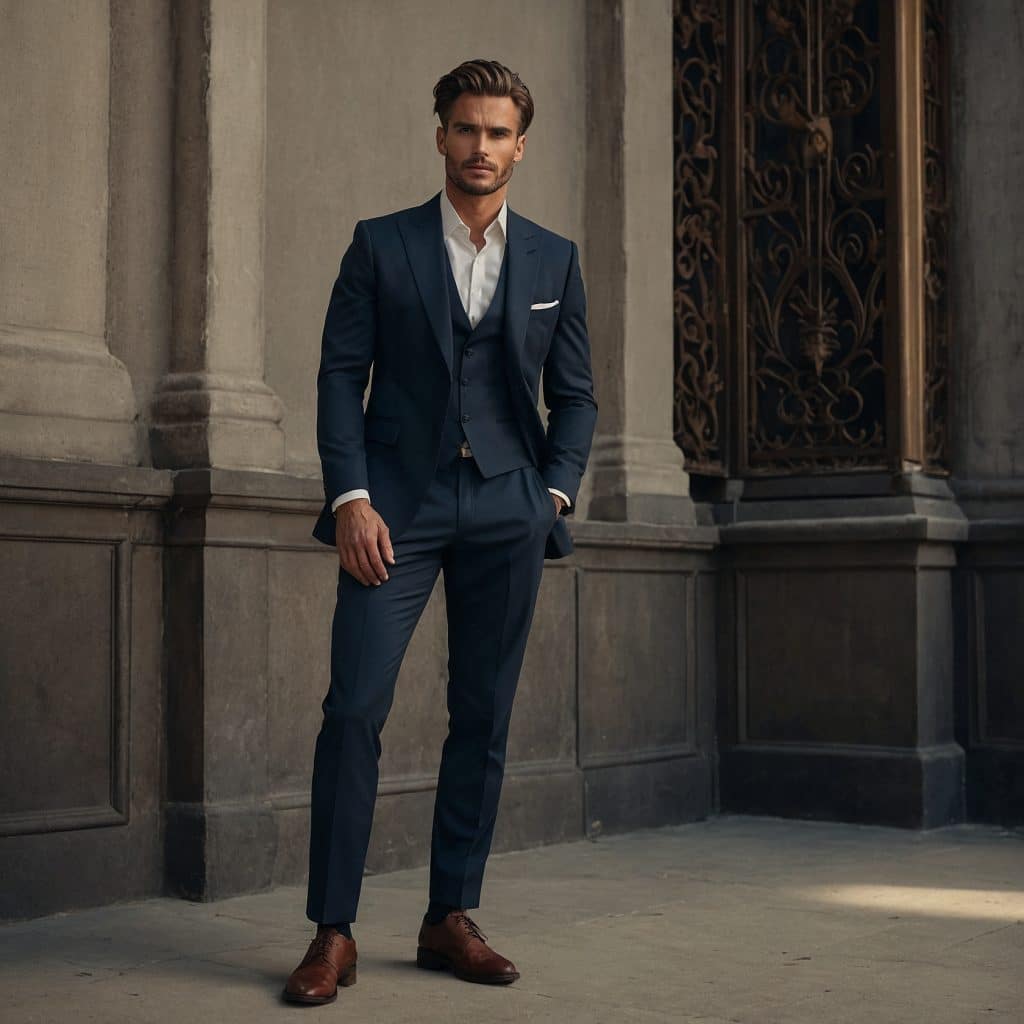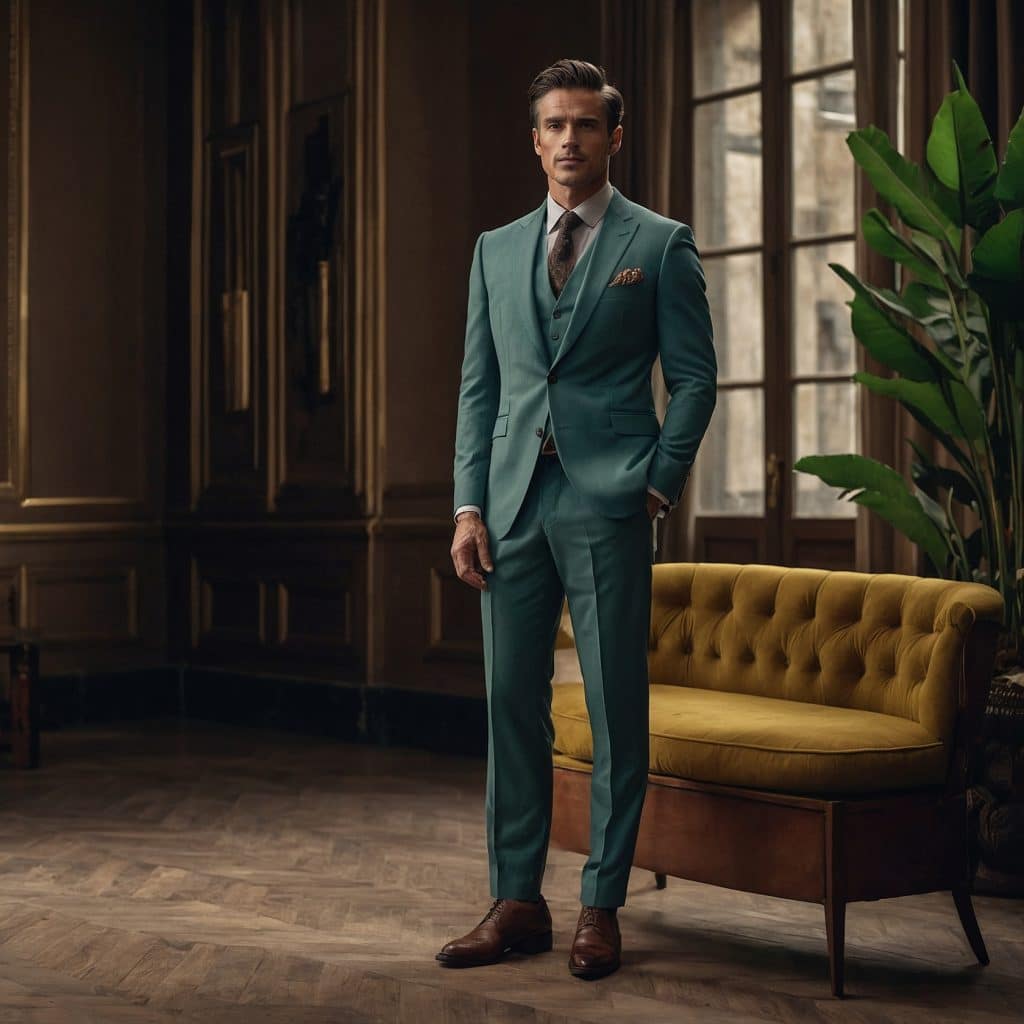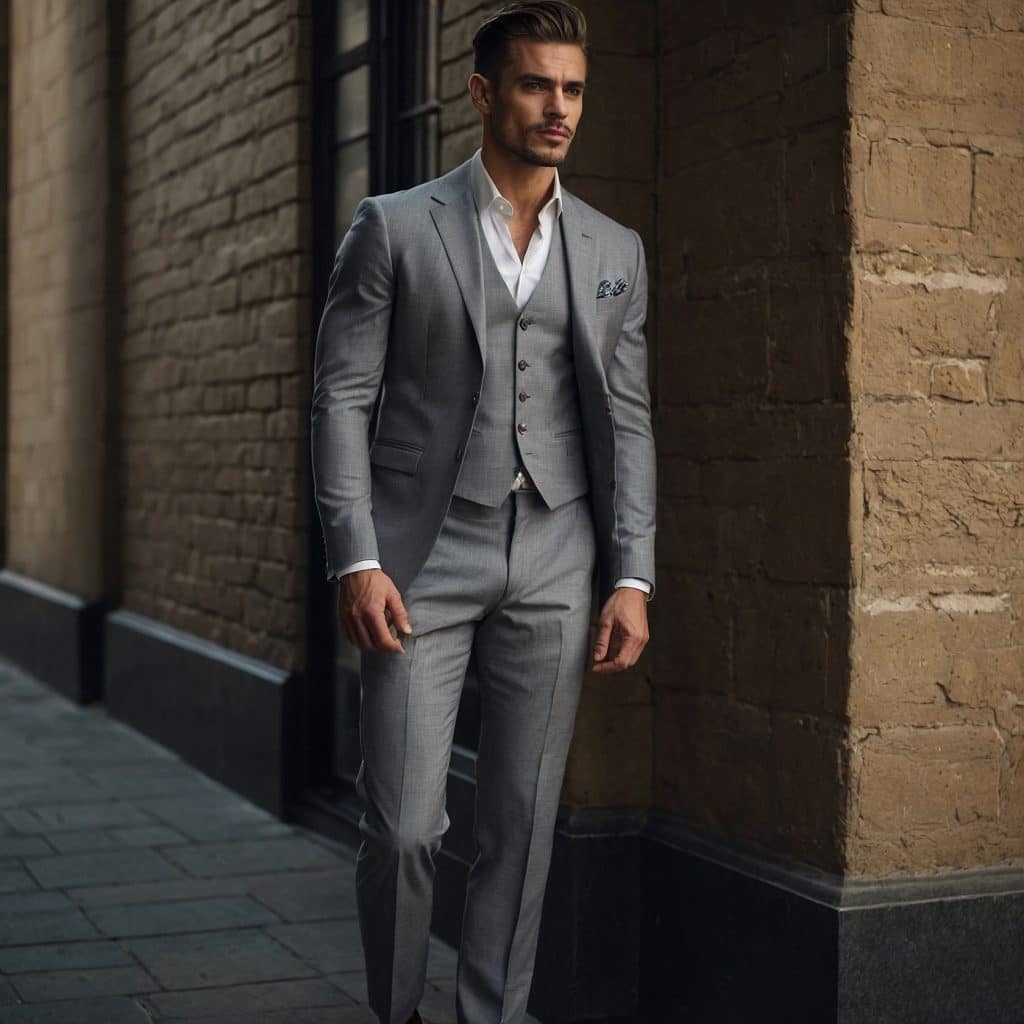In a world saturated with fleeting fashion trends and often unrealistic portrayals of the male physique, cultivating a personal style rooted in body awareness is paramount. It’s not about chasing an unattainable ideal, but rather about understanding your unique shape and proportions and leveraging clothing to highlight your best features, feel comfortable, and ultimately, boost your confidence. This comprehensive guide will delve into the art of body-conscious styling, offering practical tips on how to dress in a way that celebrates your individuality and empowers you from the inside out.
The Foundation: Understanding Your Body Shape

Before diving into specific clothing choices, the first crucial step is to understand your body shape. While everyone is unique, men’s body types can generally be categorized into a few common silhouettes. Identifying which category you most closely align with will provide a valuable framework for making informed styling decisions.
- The Inverted Triangle: Characterized by broader shoulders and chest that taper down to a narrower waist and hips. This athletic build often benefits from clothing that balances the upper and lower body.
- The Triangle (or Pear): Featuring wider hips and thighs compared to the shoulders and chest. The goal here is to create a more balanced silhouette by adding volume to the upper body and streamlining the lower body.
- The Rectangle: With relatively even proportions in the shoulders, chest, waist, and hips. This versatile shape can often carry a wide range of styles, but attention to fit and layering is key to adding definition.
- The Oval (or Round): Characterized by a fuller midsection compared to the shoulders and hips. The focus here is on creating a longer, leaner silhouette through strategic cuts and fabrics.
- The Trapezoid: Often considered the “ideal” or most balanced male physique, with shoulders slightly broader than the waist and hips. This shape can generally wear most styles well.
How to Determine Your Body Shape:
- Stand in front of a full-length mirror in your underwear or close-fitting clothing.
- Observe the proportions of your shoulders, chest, waist, and hips.
- Consider which of the descriptions above most accurately reflects your silhouette.
- You can also take measurements of your shoulders (widest point), chest (widest point), waist (narrowest point), and hips (widest point) and compare them.
Once you have a better understanding of your body shape, you can start to explore how different clothing styles and fits can either enhance or detract from your natural proportions.

The Power of Fit: Your Most Important Styling Tool
Regardless of your body shape, the fit of your clothing is arguably the most critical factor in looking and feeling your best. Ill-fitting clothes can make even the most expensive garments appear sloppy and unflattering. Understanding the different types of fits and how they interact with your body is essential.
- Slim Fit: Cut close to the body, following its natural lines without being overly tight or restrictive. This fit often works well for those with leaner or more athletic builds, highlighting their physique. However, it can accentuate areas you might want to minimize if the fit is too snug.
- Tailored Fit (or Modern Fit): A balanced fit that is neither too tight nor too loose. It offers a clean and contemporary silhouette that works well for most body types. It provides some definition without being overly restrictive.
- Regular Fit: A classic and comfortable fit that offers more room throughout the garment. While comfortable, it can sometimes appear boxy on certain body types if not chosen carefully. It’s important to ensure it doesn’t overwhelm your frame.
- Loose Fit (or Relaxed Fit): Provides the most room and is often chosen for comfort or a specific casual style. However, it can easily appear oversized and shapeless if not styled intentionally.
- Athletic Fit: Designed for individuals with a more muscular build, offering more room in the shoulders, chest, and thighs while tapering down towards the waist and ankles. This fit avoids the tightness often found in slim-fit garments for athletic individuals.
Key Considerations for Fit:
- Shoulder Seams: On shirts and jackets, the shoulder seams should ideally sit right at the edge of your shoulder bone. If they extend down your arm or are pulled too far in, the garment doesn’t fit correctly.
- Chest and Back: The fabric across your chest and back should lie smoothly without any pulling or bunching. You should be able to move comfortably without the buttons straining or the fabric feeling restrictive.
- Waist: For trousers and jeans, the waistband should sit comfortably on your natural waist without being too tight or requiring a belt to stay up. There should be a slight give, allowing you to sit and move freely.
- Seat and Thighs: The fabric in the seat and thighs of your trousers should skim your body without being too tight or too baggy. Avoid excessive bunching or tightness that restricts movement.
- Length: The length of your sleeves, trousers, and jackets is crucial for a polished look.
- Shirt sleeves: Should end at your wrist bone.
- Jacket sleeves: Should allow about half an inch of your shirt cuff to show.
- Trousers: The break (the slight fold at the hem where it meets your shoes) should be appropriate for the style. A slight or no break is generally preferred for modern styles, while a full break is more traditional.
The Art of Choosing the Right Sizes:

Navigating clothing sizes can be a frustrating experience, as sizing can vary significantly between brands and even different styles within the same brand. Here are some essential tips for selecting the right sizes:
- Don’t rely solely on the tag size: Sizes are not standardized. Always try on garments before purchasing, or carefully consult size charts provided by online retailers.
- Focus on how the garment feels: Comfort is key. You should be able to move freely and comfortably in your clothes. If something feels too tight or restrictive, it’s likely not the right size, even if the tag says it is.
- Consider the intended fit: Are you looking for a slim fit or a more relaxed style? Understand the intended fit of the garment and choose your size accordingly.
- Be aware of fabric composition: Different fabrics have different levels of stretch and drape. A non-stretch fabric in a slim fit will feel much tighter than a stretchy fabric in the same cut.
- Don’t be afraid to size up or down: It’s more important that the clothes fit well than adhering strictly to a particular size.
- Pay attention to consistency: Once you find brands and styles that consistently fit you well, make note of your preferred sizes in those specific items.
- Seek professional tailoring: If you find a garment you love but the fit isn’t quite perfect, consider investing in tailoring. A skilled tailor can make significant adjustments to ensure a flawless fit.
Styling Strategies for Different Body Shapes:
Now, let’s explore specific styling tips tailored to different body shapes to help you highlight your strengths and create a balanced silhouette:
For the Inverted Triangle:
- Focus on balancing your broader upper body with your narrower lower body.
- Tops: Opt for regular or slim-fit shirts and t-shirts that aren’t too tight on the shoulders. Crew necks and V-necks can both work well. Avoid overly padded shoulders.
- Bottoms: Choose straight-leg or slightly tapered trousers and jeans to add visual weight to your lower half. Avoid overly skinny or tight-fitting pants that will emphasize the difference in proportions.
- Jackets: Structured jackets with a defined shoulder but a straight or slightly tapered waist can work well. Avoid overly broad or padded shoulders.
- Patterns and Colors: Experiment with bolder patterns and lighter colors on your lower body to draw attention downwards. Keep the upper body in solid, darker tones if you want to minimize the broadness.
For the Triangle (or Pear):
- The goal is to broaden your shoulders and chest while streamlining your lower body.
- Tops: Choose structured shirts and jackets with shoulder pads or details like epaulets to add definition to your upper body. Horizontal stripes across the chest can also help create a wider appearance. V-necks and wider necklines can draw the eye upwards.
- Bottoms: Opt for darker wash jeans, straight-leg trousers, or slightly tapered cuts to create a leaner look. Avoid overly light colors, bold patterns, or details like large pockets on the hips and thighs.
- Jackets: Structured blazers and jackets with a defined shoulder line are your allies.
- Patterns and Colors: Wear lighter and brighter colors on your upper body to draw attention upwards, and stick to darker, solid colors for your lower body.
For the Rectangle:
- Focus on creating definition and adding shape to your silhouette.
- Tops: Experiment with layering to add dimension. Textured fabrics and patterns can also help create visual interest. Consider slim-fit or tailored-fit shirts and t-shirts to avoid a boxy appearance.
- Bottoms: Almost any trouser or jean style can work, but pay attention to the rise and fit to create the desired silhouette. A slightly tapered leg can add some shape.
- Jackets: Structured jackets with a defined waist or the use of a belt can help create an hourglass effect.
- Patterns and Colors: Don’t be afraid to experiment with patterns and colors to add visual interest and break up the straight lines of your body.
For the Oval (or Round):
- The aim is to create a longer, leaner silhouette.
- Tops: Choose V-neck or scoop-neck shirts to create a more elongated neckline. Vertical stripes can also have a slimming effect. Opt for darker, solid colors. Avoid overly tight or bulky fabrics.
- Bottoms: Straight-leg or slightly tapered dark wash jeans and trousers are generally flattering. Avoid overly tight or light-colored bottoms.
- Jackets: Structured jackets with a defined shoulder and a single-breasted closure can help create a more streamlined look. Avoid double-breasted jackets and bulky outerwear.
- Patterns and Colors: Stick to darker, solid colors, especially around the midsection. If you choose patterns, opt for small, vertical designs.
For the Trapezoid:
- Congratulations! Your balanced proportions allow you to wear most styles well.
- Experiment with different fits, fabrics, and patterns to find what you like and what makes you feel confident.
- Pay attention to the details and ensure that your clothing fits well to maintain a polished look.

Beyond Body Shape: Embracing Individuality and Comfort
While understanding your body shape is a valuable starting point, body-conscious styling goes beyond simply adhering to these categories. It’s about embracing your unique features, understanding your personal preferences, and prioritizing comfort.
- Highlight Your Favorite Features: Do you have broad shoulders you’re proud of? Lean legs you want to show off? Use clothing to draw attention to your best assets.
- Consider Your Lifestyle: Your clothing choices should align with your daily activities and personal style. Someone who works in a formal office will have different needs than someone who works in a creative field or enjoys outdoor adventures.
- Don’t Be Afraid to Experiment: Fashion is a form of self-expression. Don’t be afraid to try new styles and colors to discover what makes you feel good.
- Trust Your Gut: Ultimately, the best style is the one that makes you feel confident and comfortable in your own skin. If you love an outfit and feel good wearing it, that’s what matters most.
The Confidence Connection:
Body-conscious styling is not just about aesthetics; it’s deeply intertwined with self-confidence. When you wear clothes that fit well and flatter your body, you naturally feel more comfortable and self-assured. This newfound confidence can positively impact all areas of your life, from your personal relationships to your professional 1 endeavors.
In Conclusion:
Mastering the art of body-conscious styling is a journey of self-discovery and empowerment. By understanding your body shape, prioritizing the right fit and size, and employing strategic styling techniques, you can curate a wardrobe that not only looks good but also makes you feel fantastic. Remember that the goal is not to conform to unrealistic ideals, but to celebrate your unique physique and express your personal style with confidence. So, take the time to understand your body, experiment with different styles, and ultimately, dress in a way that makes you feel like the best version of yourself.
